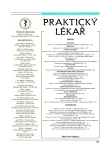Shoa – Cyklon B – cyanide intoxication
Authors:
J. Vejlupková
Published in:
Prakt. Lék. 2005; 85(9): 485-489
Category:
Reviews
Overview
Man can be exposed to hydrogen cyanide in many professions as well as otherwise. In World War II the Nazis used it in gas chambers under the trade name Cyklon B, in concentration camps mainly for mass extermination of the Jewish population. It is one of the strongest poisons. In the organism it binds to Fe 3 in mitochondrial cytochrome oxidase and blocks cellular respiration. The inhibition of cytochrome oxidase stops oxidative phosphorylation and aerobic glucose utilization with all its consequences. Intoxication takes a very rapid and often lethal course. With a certain delay, it develops upon ingestion of cyanide salts, certain organic compounds or plant parts containing cyanogenic glycosides. Presented is the clinical and laboratory picture of intoxication as well as detailed information on classical and contemporary treatment with antidotes, which should begin immediately.
Key words:
holocaust – Cyklon B – hydrogen cyanide gas – cyanide salts – intoxication.
Labels
General practitioner for children and adolescents General practitioner for adultsArticle was published in
General Practitioner

2005 Issue 9
Most read in this issue
- The importance of identifying dysmorphophobia
- Shoa – Cyklon B – cyanide intoxication
- Malignant hypertension as a serious complication of aortic coarctation diagnosed in advanced age
- Laparoscopic bandaging of the stomach in the struggle against obesity
